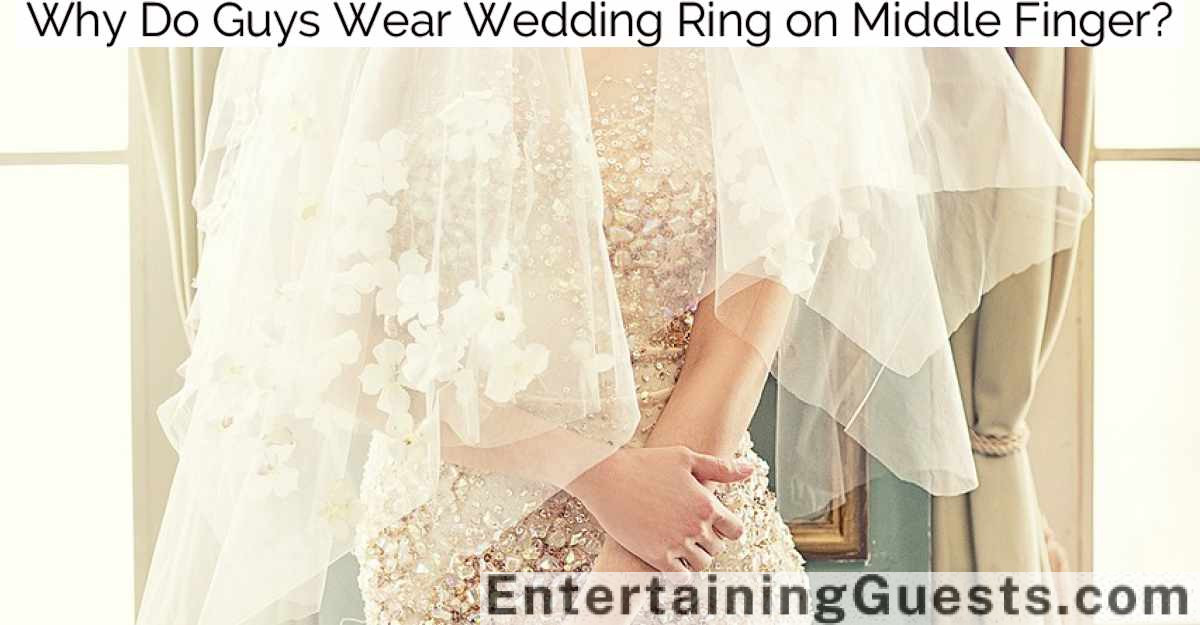Men often wear wedding rings on both hands due to diverse cultural, personal, and symbolic meanings. Historically, rings have indicated social status and fidelity, with variations in placement reflecting different cultural interpretations. In Eastern Europe and some South American cultures, a right-hand ring signifies marital commitment, while in Western traditions, the left hand is more common. Additionally, individual choices often derive from familial traditions or personal stories, where each ring might represent distinct aspects of one’s identity or heritage. Exploring these practices further reveals a rich tapestry of beliefs and customs surrounding the symbolism of dual-ring wearing.
Key Takeaways
- Wearing rings on both hands can symbolize distinct life aspects, like family crests or professional affiliations.
- Some men express dual cultural identity by wearing rings on both hands, balancing heritage and personal beliefs.
- Multiple rings serve as a form of personal expression, telling individual stories and showcasing personal significance.
- Religious beliefs and cultural practices often dictate ring placement, influencing men to wear wedding rings on both hands.
- Fashion and style considerations play a role, as men choose to wear multiple rings to reflect their aesthetic preferences and individuality.
Historical Significance of Rings
Rings have served as symbols of authority, fidelity, and social status since ancient times. Historians trace the origins of ceremonial rings back to ancient Egypt, where they were woven from reeds and other plants that grew along the Nile River. These early rings symbolized eternity, reflected in their circular shape, which has no beginning or end.
The practice then spread to the Romans, who adopted the ring as a public pledge of marriage contracts, symbolizing the husband’s trust in his wife’s stewardship over his household. The material and design of rings also held significant meaning. In ancient Rome, iron rings were worn inside the home to signify the private, binding nature of the contract, while more elaborate gold rings were worn in public to display wealth and status.
This dual use underscores the ring’s role not just as a personal adornment but as a marker of socio-economic standing. The evolution of ring symbolism continued into the Middle Ages in Europe, where the Church took an active role in sanctifying the marital union, embedding the ring further into cultural practices as a sacred symbol of fidelity and mutual respect between partners.
The ring, consequently, evolved from its primitive organic forms to embody complex societal and religious significances.
Cultural Variations in Wedding Traditions
Wedding traditions vary widely across cultures, each with unique customs that reflect its values and history. In many societies, the symbolism and practice of wearing wedding rings signify the marital status and the commitment between partners. However, the specifics, such as which hand the ring is worn on, can differ considerably.
In Western cultures, particularly in the United States and the UK, the tradition is typically to wear the wedding ring on the left hand. This custom stems from the ancient Roman belief that a vein ran directly from the left ring finger to the heart. Conversely, in many Eastern European and some South American countries, the wedding ring is worn on the right hand, often tied to religious or cultural reasons.
Key cultural variations include:
-
Hand Preference: Whether the wedding ring is worn on the left or the right hand can signify different meanings and origins.
-
Material and Design: The choice of metal and design can reflect local customs, economic status, or family traditions.
-
Ceremonial Differences: Some cultures have elaborate ring exchange ceremonies, while others have more simplified rituals.
These distinctions provide a fascinating glimpse into how deeply embedded cultural beliefs and practices are in the institution of marriage.
Symbolism of Wearing Multiple Rings
Exploring the symbolism of wearing multiple rings reveals varied interpretations and meanings across different cultures and personal beliefs.
In many societies, each ring that a man adorns may symbolize a distinct aspect of his life or personal identity. For instance, beyond the traditional wedding band, a second ring on a different hand might represent a family crest, indicating lineage or ancestral pride. Alternatively, it could signify professional affiliation or accomplishment, such as an engineering ring, which symbolizes integrity and presence within a specific industry.
The act of wearing multiple rings can also be seen as a form of self-expression, where each item carries a unique story or personal significance. This practice allows individuals to communicate aspects of their personality and life experiences without verbal exposition.
In some cultures, the materials and gems in these rings further encapsulate specific energies or properties believed to influence various aspects of life, from love to fortitude.
Analyzing these practices shows how deeply intertwined personal adornments can be with cultural norms and individual values. They’re not merely decorative but serve as a nexus between personal identity and cultural heritage, revealing much about the wearer’s social world and personal journey.
Influence of Celebrity Trends
Celebrity influence markedly shapes public perceptions and behaviors regarding the wearing of multiple rings, including wedding bands. When high-profile individuals adopt and showcase unique fashion choices such as wearing wedding rings on both hands, this often sets a trend that broad segments of the population may follow.
The visibility and reach of celebrities, amplified by extensive media coverage and social media platforms, play a pivotal role in embedding such trends into the cultural fabric.
The adoption of dual-ring wearing can be dissected through several lenses:
-
Visibility and Imitation: The public visibility of celebrities wearing wedding rings on both hands encourages fans and followers to emulate this style, attributing similar symbolic meanings or aesthetic values to the practice.
-
Media Amplification: Media outlets often spotlight celebrity fashion choices, further influencing public opinion and adoption rates of these trends.
-
Cultural Shifts: Celebrity trends can lead to broader cultural shifts in how marriage and commitment are symbolized, potentially altering traditional norms and practices around marital symbols.
Analyzing these elements reveals that the influence of celebrities isn’t merely superficial but often induces significant shifts in societal norms and personal behaviors regarding the symbolism and practice of wearing wedding bands.
Personal Stories and Testimonies
Personal anecdotes and testimonials vividly illustrate how individuals navigate the cultural and personal significance of wearing wedding rings.
For example, Thomas, a 52-year-old businessman from New York, wears his wedding band on his left hand and an inherited ring from his grandfather on his right. He describes this practice as "a bridge connecting my past, present, and future." This dual wearing isn’t merely a sentimental gesture but a complex symbol of identity formation and familial continuity.
Meanwhile, Raj, a young IT professional from India now living in Canada, wears his wedding ring on both hands to balance his dual cultural identity. He notes that in India, wearing the ring on the right hand is common, while in Western cultures, the left hand is traditional. His choice is a deliberate act to honor both his heritage and his present life in Canada.
These stories underline the nuanced role that personal choice and cultural heritage play in the decision to wear wedding rings on both hands.
Such decisions are often laden with deep personal meanings that reflect broader social norms, individual identity, and cross-cultural adaptations.
These narratives provide a rich, textured understanding of the symbolism associated with wedding rings beyond mere convention or style.
Religious Interpretations and Beliefs
Religious beliefs often dictate the hand on which a wedding ring is worn, reflecting deep-seated traditions and spiritual interpretations. Various religions interpret the symbolism of the wedding ring and its placement differently, attributing specific meanings and significance to either the left or the right hand.
Orthodox Christianity: In many Eastern Orthodox countries, wedding rings are traditionally worn on the right hand. This practice is rooted in biblical references where the right hand is associated with honor and authority. The placement symbolizes the sanctity and the solemn commitment of marriage.
Judaism: Jewish tradition dictates that during a wedding ceremony, the wedding ring is initially placed on the index finger of the right hand, based on interpretations of ancient texts that suggest the right hand represents virtue and moral integrity. However, many Jews later move the ring to the left hand.
Hinduism: In Hindu culture, the right hand is considered auspicious and pure. Consequently, the wedding ring is worn on the right hand. This practice aligns with broader cultural beliefs about the right hand’s role in ceremonies and the receipt of blessings.
These practices highlight how religious beliefs not only influence the choice of which hand for ring placement but also imbue this choice with profound cultural and spiritual meanings.
Legal and Social Implications
The variability in marriage laws across different jurisdictions can greatly influence the practice of men wearing wedding rings.
For instance, in some cultures, legal frameworks support the display of marital status publicly, reinforcing the ring’s significance as a symbol of commitment.
Meanwhile, societal expectations can either enhance or diminish the propensity of men to wear wedding bands, reflecting broader cultural narratives about masculinity and marital fidelity.
Marriage Laws Variation
While marriage laws vary considerably across different jurisdictions, these variations often reflect deep-seated cultural, legal, and social norms that influence gender roles and expectations within marriage. These legal frameworks not only dictate who can marry but also outline the rights and responsibilities of each spouse, potentially affecting how symbols like wedding rings are used and perceived.
-
Property Rights: In some regions, marriage laws stipulate distinct property regimes which can influence financial dynamics between spouses, thereby affecting decisions on purchases like jewelry.
-
Inheritance Laws: Variations in inheritance laws may impact how assets are transferred between spouses, influencing the significance and use of marriage symbols to denote joint or separate estates.
-
Divorce Regulations: Different jurisdictions have diverse rules on divorce, including alimony, asset division, and custody, shaping how individuals view and engage in the institution of marriage.
These legal particulars are essential in understanding why certain marital symbols, such as the wearing of wedding rings on both hands, may carry different meanings across cultures. The legal environment can subtly guide marital behavior and expectations, reinforcing or challenging traditional gender roles within different societal contexts.
Cultural Expectations Impact
Cultural expectations greatly shape the legal and social implications of marital symbols like wedding rings, reflecting broader societal beliefs about gender roles and marital responsibilities.
In many cultures, the presence of a wedding ring on a man’s hand signals his commitment and fidelity, which carries significant social weight. This expectation can influence legal aspects, such as the presumption of paternity in certain jurisdictions, where a married man is legally assumed to be the father of his wife’s children. Such legal stances reinforce the social expectation of monogamy and paternal responsibility.
Moreover, in societies where wearing wedding rings is customary for men, those who choose not to conform may face social scrutiny or assumptions about their marital stability. This can extend to professional environments, where the visibility of a wedding ring might affect perceptions of responsibility or reliability. The ring acts not just as a personal symbol of commitment, but also as a public cue that engages with culturally encoded messages about masculinity, stability, and respectability.
Thus, the decision for a man to wear a wedding ring on one or both hands isn’t merely a personal or aesthetic choice—it’s deeply intertwined with cultural norms and legal implications that frame marital relationships within specific socio-cultural contexts.
Psychological Effects of Ring Placement
Ring placement often influences a man’s psychological perception of commitment and marital identity. When a man chooses to wear a ring, specifically a wedding ring, on his left or right hand, it becomes more than a mere ornament; it transforms into a symbol of his marital status and personal commitment. The decision on which hand to wear the ring can be influenced by cultural norms, but it subconsciously aligns with one’s sense of self and marital obligation.
Different ring placements can lead to distinct psychological impacts:
-
Sense of Belonging: Wearing a ring, especially on a culturally designated finger, reinforces a sense of belonging to a particular societal or familial group.
-
Perceived Stability: A visible sign of marital commitment, such as a wedding ring, can enhance the wearer’s psychological feeling of stability and security within the marriage.
-
Identity and Role Confirmation: The placement of a wedding ring helps solidify the wearer’s role and identity as a spouse, acting as a constant reminder of the vows and commitments made.
Analyzing these psychological effects is significant because they subtly influence a man’s daily interactions and personal self-esteem. The symbolism embedded in the act of wearing a wedding ring extends deeply into the psychological domains of identity and personal commitment.
Fashion and Style Considerations
Beyond the psychological implications, the aesthetic appeal and design of wedding rings also play a significant role in how men perceive and choose their bands.
In contemporary fashion, the wedding ring isn’t just a symbol of marital commitment but also an accessory that complements one’s personal style. The decision to wear wedding rings on both hands can be seen as a fashion statement that reflects a man’s individuality and aesthetic preferences.
Men’s wedding rings have evolved from simple bands to intricate designs featuring a variety of materials such as gold, platinum, silicone, and even decorated with diamonds or other gemstones. This diversification in design allows men to express their style while adhering to the traditional symbolism of wedding bands.
The choice of wearing rings on both hands further enhances this expression, providing a symmetry that’s visually appealing and often more balanced.
The placement of wedding rings on both hands can also be influenced by the design of the rings themselves. For instance, a minimalist band on one hand might be complemented by a more ornate ring on the other, creating a dynamic contrast that’s both striking and stylish.
This dual-ring approach allows men to navigate between traditional elegance and modern sophistication, making a statement that’s uniquely their own.
Future Trends in Wedding Jewelry
As environmental concerns escalate, the jewelry industry witnesses a significant shift toward sustainable materials in crafting men’s wedding rings.
Concurrently, technological advancements herald the emergence of smart rings that not only symbolize matrimonial commitments but also offer multifunctional capabilities.
These dual trends reflect a broader societal movement towards both eco-conscious consumption and the integration of technology into personal accessories.
Sustainable Materials Rise
Sustainable materials are increasingly dominating the wedding jewelry market, reflecting a growing consumer commitment to environmental responsibility. Driven by ecological concerns and ethical considerations, the shift towards materials that minimize environmental impact is reshaping consumer preferences and industry practices.
This trend not only supports global sustainability goals but also caters to the ethical sensibilities of modern consumers who are deeply invested in the origins and manufacturing processes of their jewelry.
The surge in popularity for sustainable wedding bands and engagement rings is evident in the adoption of:
-
Recycled Metals: Gold and silver sourced from recycled electronic components and other metal waste reduce the need for mining, thereby lessening environmental degradation.
-
Lab-grown Diamonds: These diamonds are cultivated in controlled environments, ensuring that no natural habitats are disrupted and that the labor conditions are humane and regulated.
-
Alternative Materials: Jewelry made from wood, bone, and other biodegradable materials is gaining traction as they offer an eco-friendly alternative to traditional precious metals and gems.
Smart Rings Innovation
Building on the momentum of ecological awareness, smart rings represent the next frontier in wedding jewelry, integrating cutting-edge technology with traditional symbolism. These innovative accessories not only symbolize marital commitment but also offer functional benefits that align with contemporary lifestyles. As the market evolves, potential features like health monitoring, data storage, and connectivity with other smart devices are becoming increasingly feasible. Such advancements suggest a future where smart rings could seamlessly integrate into the daily lives of married individuals, offering both symbolic and practical value.
To understand the scope and potential of smart rings in the context of wedding jewelry, consider the following table which categorizes key attributes and expected technological integrations:
| Feature | Description | Expected Impact |
|---|---|---|
| Health Monitoring | Tracks essential signs and physical activity | Enhances personal health management |
| NFC Payments | Enables contactless payments | Offers convenience in transactions |
| Custom Notifications | Alerts for messages, calls, and reminders | Improves connectivity and accessibility |
| Data Encryption | Secures personal and shared data | Increases privacy and security |
| Design Customization | Personalized aesthetics and functionality | Strengthens emotional and personal value |
These elements outline how smart rings could revolutionize the concept of wedding bands, blending emotional significance with utilitarian benefits that cater to the demands of modern life.
Frequently Asked Questions
How Do Wedding Ring Materials Affect Skin Sensitivity?
Wedding ring materials can trigger skin reactions; metals like nickel often cause allergies. Opting for hypoallergenic options, such as platinum or titanium, reduces the risk of irritation for those with sensitive skin.
Can Wearing Rings on Both Hands Improve Balance?
Wearing rings on both hands doesn’t improve physical balance, as balance relates more to inner ear function and muscle coordination. However, symmetrical adornment might psychologically impart a sense of equilibrium or completeness.
Are There Ergonomic Benefits to Wearing Multiple Rings?
Wearing multiple rings doesn’t typically offer ergonomic benefits. Rather, it’s a style or cultural preference. Ergonomically, multiple rings can actually hinder hand function and comfort, especially during prolonged periods of wear.
What Are the Insurance Implications for Multiple Wedding Rings?
Insurance premiums may rise when insuring multiple wedding rings, as the total value increases. Policyholders must declare each ring’s value accurately to guarantee full coverage in case of loss or theft.
How Often Should Dual Wedding Rings Be Cleaned?
Dual wedding rings should be cleaned at least once every six months to maintain their luster and prevent buildup of dirt and oils, which can diminish their appearance and potentially cause damage.
Conclusion
To summarize, the practice of men wearing wedding rings on both hands reflects a complex interplay of historical, cultural, and personal factors.
This trend, influenced by celebrity endorsements and evolving fashion norms, carries significant symbolic weight, denoting commitment and identity.
Analyzing this phenomenon reveals broader societal shifts and psychological impacts tied to jewelry choices.
As jewelry designs continue to evolve, these practices may further shape the social and personal landscapes of marital symbolism.




